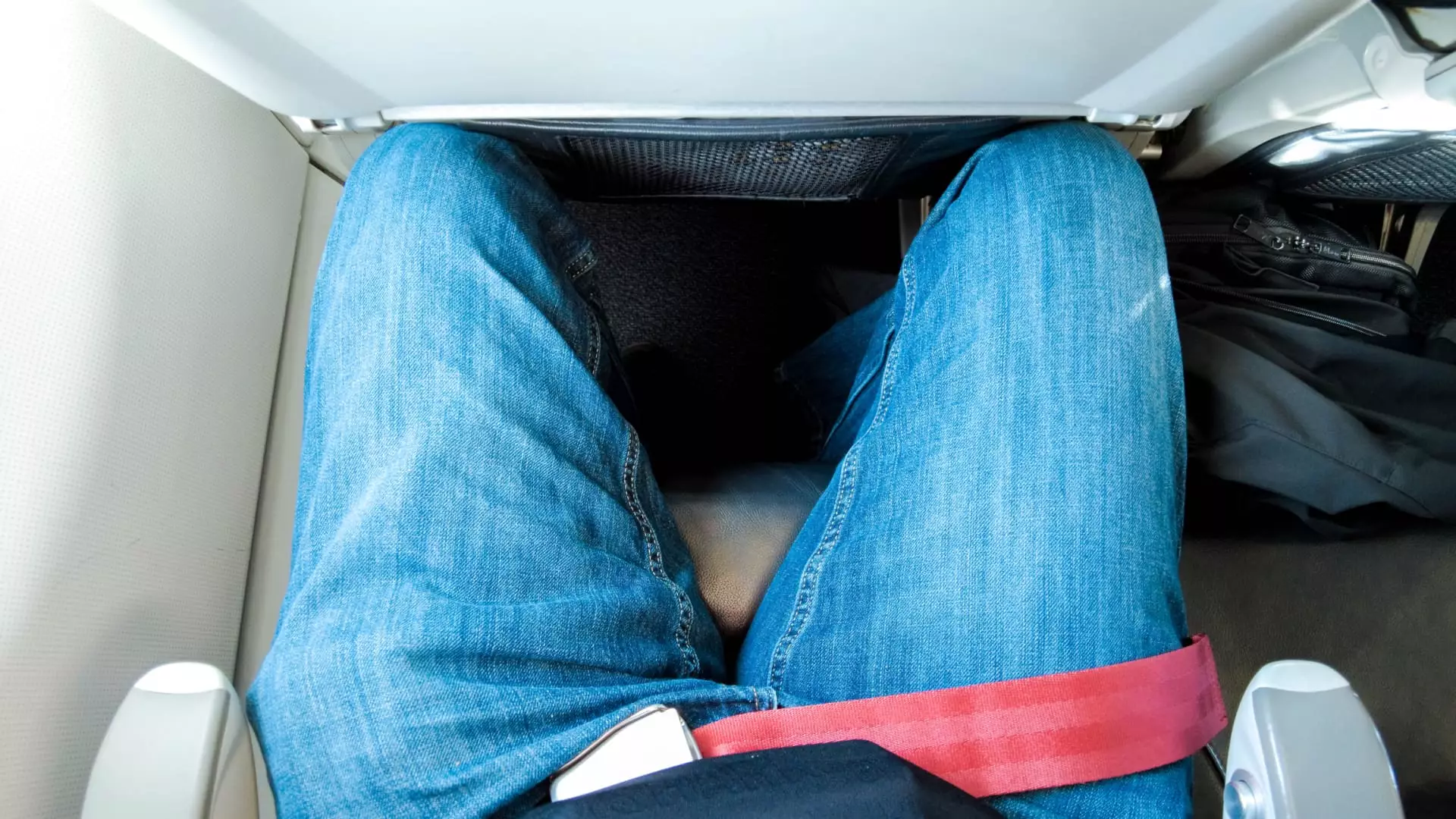In a recent incident aboard a Cathay Pacific flight from Hong Kong to London, a couple’s confrontation with a fellow passenger over seat reclining quickly escalated into a public spat that gained significant attention on social media. The altercation, which was recorded and shared widely on the platform Xiaohongshu—often characterized as China’s Instagram—has sparked a nationwide discussion regarding in-flight etiquette and customer service practices within airlines. The couple, who engaged in disruptive behavior by jostling the seat of a woman who opted to recline, have since been banned from flying with Cathay Pacific, illustrating the airline’s commitment to maintaining order and respect among its passengers.
The video footage from the flight depicts the couple engaging in taunting and employing disrespectful hand gestures aimed at the reclining passenger. This conduct, which is particularly troubling in the confined space of an airplane, raised eyebrows not just for its crudeness but for its direct violation of basic social etiquette. Cathay Pacific, in a public statement, made it clear that it maintains a zero-tolerance policy toward behavior that disrupts passenger safety or disrespects their rights, reinforcing the necessity of respectful conduct in communal spaces like planes.
Although the airline has not provided in-depth commentary beyond its standardized response, this incident reveals a troubling trend in air travel where personal disputes escalate quickly under the stress and confinement of long-haul flights. The airline faced criticism, both for the actions of its passengers and the perceived delay in addressing the couple’s unacceptable behavior, indicating a complex relationship between passengers and airline staff in managing onboard disputes.
In the wake of the altercation, the woman in question sought assistance from flight attendants. She expressed disbelief that she was being asked to compromise her comfort due to the harassment she experienced. This underscores a larger issue where airline staff may not be equipped to de-escalate conflicts effectively, leaving vulnerable passengers at the mercy of more aggressive fellow travelers. As the situation escalated, passengers nearby intervened, calling for decency and urging the couple to cease their harassment. This collective outrage among fellow passengers highlights a growing awareness and willingness to stand up against inappropriate behavior, especially when it may infringe on the comfort and rights of others.
The behavior displayed by the couple prompted immediate reactions from bystanders, with calls echoing through the cabin to “show some decency” and challenging the discrimination implicit in their remarks. The incident not only depicts a breakdown of civility onboard but also serves as a reminder of the importance of fostering a supportive environment among passengers.
This incident cannot be viewed in isolation but rather as symptomatic of deeper cultural divides, particularly between residents of mainland China and those from Hong Kong. The actions and identity of the passengers involved compose a backdrop of lingering tensions related to cultural misunderstandings and socio-political issues. The references made to the reclining passenger as a “mainlander” allude to larger societal narratives surrounding class and cultural distinctions, further fueling discontent among social media commentators. Some have critiqued Cathay Pacific, suggesting that the airline’s initial response was insufficient, painting a picture of an overall adversarial relationship between the airline and certain segments of Chinese travelers.
The inconsistent treatment of travelers based on where they hail from raises questions about how airlines manage their customer service. This incident mirrors previous controversies surrounding Cathay Pacific, including one in which flight attendants were let go after mocking a non-English speaker. Such occurrences reveal the precarious position airlines find themselves in while attempting to balance enforcement of policies with maintaining good customer relations, especially amidst state pressures.
The issue of seat reclining has transformed from a mundane aspect of air travel into a contentious battleground reflecting changing standards of etiquette in the confined quarters of commercial flights. As airlines increasingly pack more seats into their cabins while retaining limited passenger space, the debate surrounding seat reclining has intensified.
Opinions vary extensively on the propriety of reclining a seat. While some view reclining as a right entitled by the nature of modern airplane seating, others argue that it is inherently inconsiderate, particularly in economy class where space is already at a premium. Compounding this debate are factors like flight duration, the time of day, and the positions of surrounding seats, which complicate dynamics and etiquette aboard flights.
The incident involving the couple and the reclining passenger on Cathay Pacific underscores the growing challenges airlines face in managing passenger relations and ensuring onboard civility. As air travel continues to be a tightly packed experience, the need for clear guidelines regarding behavior, as well as enhanced training for flight personnel to handle disputes, has never been more apparent. This incident not only highlights a case of poor social interaction but also spotlights the broader cultural implications and societal tensions that seep into modern air travel experiences.

